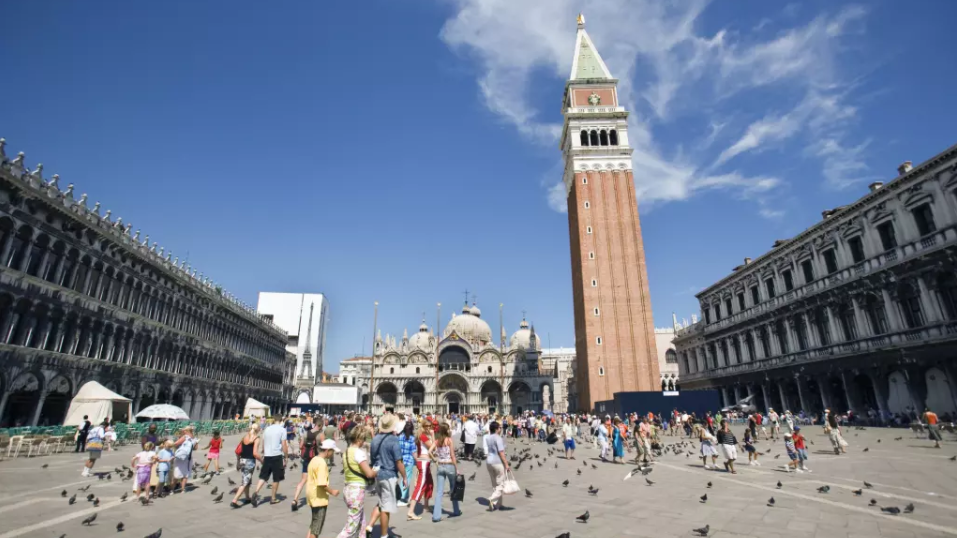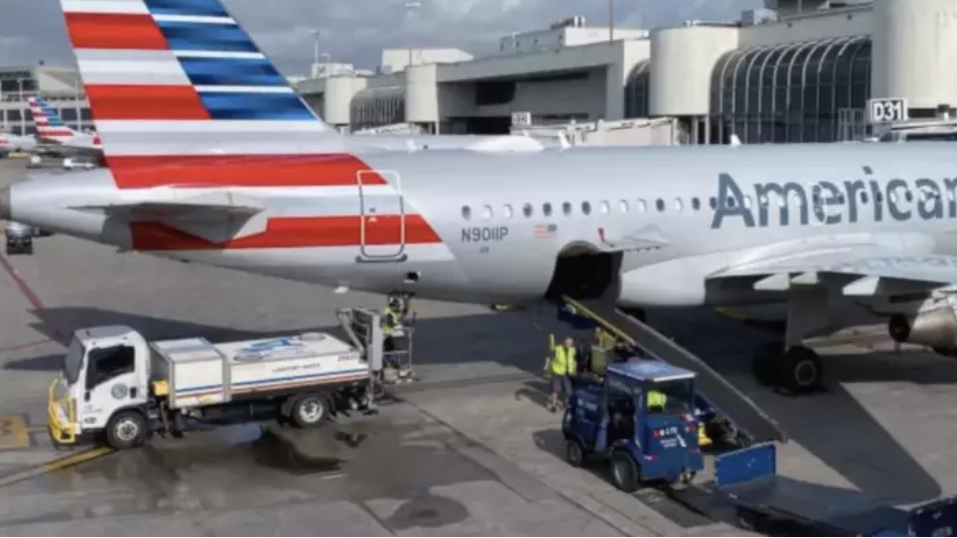European airlines to suffer world heaviest loss margin in 2021
According to IATA's Apr-2021 forecast of airline economic performance, European airlines will suffer the heaviest loss margin of all regions this year. This is due to their high dependence on international markets and the high levels of restrictions on international travel pervading in Europe.
For several months Europe has suffered the lowest levels of capacity compared with the last pre-crisis year, 2019. In the week of 26-Apr-2021, seat capacity in Europe is 72.5% below the equivalent week of 2019. The next weakest region is Africa, where capacity is down by 53.7% versus 2019; Middle East is down by 52.2%, Latin America by 45.0%, North America by 38.3%, and Asia Pacific by 30.6% in comparison with 2019.
Data from ACI Europe show that passenger numbers are even weaker than seat numbers. The gap has narrowed from 10-12ppts in 2020 to 5-8ppts in 2021, but this is of little comfort when capacity is so low.
IATA forecasts that RPKs in Europe will be 66.3% below 2019 this year - not even recovering to 50% in 2H2021. The trade body also forecasts an EBIT margin of -19% for European airlines this year, which is twice as bad as the global average.
TO READ ON, VISIT: European airlines to suffer world heaviest loss margin in 2021

Global travel/tourism sectors lost massively in 2020; how to revive
The global travel and tourism sector lost as much in revenues in 2020 as 'Second World' controlled-economy countries used to lose over the life of their five-year plans.
The World Travel & Tourism Council (WTTC) is bullish that international travel could restart in earnest in Jun-2021 if a series of its recommendations are adhered to, and that 'normality' could be restored as early as 2022 - well in advance of other estimates.
But the underlying problem, now over a year into the COVID-19 pandemic, is that the 'ecosystem' has been trodden underfoot, and not by air transport passengers.
There is a basic lack of everything - functioning aircraft, in some cases pilots to fly them and cabin staff to work them, hotels to stay in, restaurants to eat in, conference facilities to meet in, travel agents and tour operators to make bookings through, beaches to stroll on without having to wear a mask…the list goes on.
While the WTTC does at least have a 'plan' to put Humpty Dumpty back together again - which is more than can be said for many governments and for some other travel-related organisations - the real problem the industry will face if and when the virus wanes may be the one in peoples' heads.
TO READ ON, VISIT: Global travel/tourism sectors lost massively in 2020; how to revive

UK to include aviation in carbon emissions targets
The UK government said on 20-Apr-2021 that it would become the first major nation to include international aviation in its carbon dioxide emissions targets. This follows a recommendation from the Climate Change Committee (CCC), which advises the UK on emissions targets.
In 2019 the UK became one of the first leading countries to commit to a 2050 target of net zero CO2 emissions for the wider economy, but that did not include aviation. Although UK aviation (and much of European aviation) already targets net zero by 2050, this now looks set to be formalised by government commitment.
In addition, it increases the focus on other CCC recommendations, such as the need to constrain aviation demand growth. Suggested measures include taxes, levies and carbon pricing, and ensuring no net increase in UK airport capacity - all of which are unlikely to be welcomed by the industry.
Moreover, the UK's action may prompt the EU - and other international partners - to follow suit.
TO READ ON, VISIT: UK to include aviation in carbon emissions targets

US airlines welcome inflection point in domestic demand
By most US airline accounts, it looks as if the pent-up demand that's dominated discourse for the past six months of 2020 into 2021 is finally being unleashed, as booking curves widen and yields for the country's busy summer high season look promising.
Of course, that demand is all leisure driven and concentrated in the domestic and short haul international markets.
At this point, it is anyone's guess when a large number of borders will open; but US operators think the same demand scenario that is occurring domestically could play out for long haul travel. However, the window for travel to Europe during the summer high season is shrinking quickly even as the EU has signaled it could allow US vaccinated travelers to visit the region this summer.
Even corporate demand is beginning to thaw, and some operators believe that a 50% recovery in US business travel could occur before the end of the year. But over the longer term, whether or not corporate travel will fully recover remains an unknown.
TO READ ON, VISIT: US airlines welcome inflection point in domestic demand

Europe's airline capacity slides back towards lowest since Apr-2020
Expressed as a percentage of 2019 levels, Europe's airline seat capacity is sliding back towards its lowest levels since the first lockdown in Apr-2020.
In the week of 19-Apr-2021, seat capacity in Europe is 73.6% below the equivalent week of 2019 and not far from the -75% region it occupied for much of Feb-2021 and Mar-2021, before staging a very modest recovery.
For more than six months Europe has been far below other regions on this measure. Africa capacity is down by 54.5% versus 2019, Middle East by 52.3%, Latin America by 48.3%, North America by 38.0%, and Asia Pacific by 31.0%.
Data from the CAPA Fleet Database show that Europe also lags the rest of the world on the share of its aircraft that are in service. As at 19-Apr-2021, 61% of European operators' passenger jets are in service, versus a global average of 72%.
Europe's LCCs and legacy airlines currently have a similar percentage in service, but LCCs have varied this percentage more throughout the crisis. The leading European LCCs have better liquidity and lower costs and are generally more adaptable to demand fluctuations.
TO READ ON, VISIT: Europe's airline capacity slides back towards lowest since Apr-2020

Brazil's anchor airport privatisation theory spreads in LatAm
Since 2011 all eyes have been on Brazil, where an attempt is being made to auction off just about every commercial scheduled airport in a series of concessions supplemented by separate procedures in some of the states. Brazil is the third major country in Latin America to do this.
Now Uruguay, sandwiched between Brazil and Argentina, which concessioned its airports as long ago as 1998, is belatedly trying to find concessionaires for small regional airports with no scheduled services, some of which are falling apart.
There does not seem to be much prospect of that happening, finding concessionaires, and the two airports that would interest investors, at Montevideo and Punta del Este, are already gone. But there are many potential benefits that can be dug from beneath the surface, at least for the investing in infrastructure in Uruguay.
TO READ ON, VISIT: Brazil's anchor airport privatisation theory spreads in LatAm

European airports to lose EUR29 billion revenue in 2021
The situation facing European airports gets direr with every passing day. In a recent report from ACI EUROPE the organisation says that they will collectively lose as much in revenues in 2021 as they did in 2020.
Moreover, air routes continue to decline in number and many may never be recovered. None of this was on the cards when the coronavirus pandemic began 14 months ago, and the position continues to be untenable.
Traffic statistics continue to be skewed violently as well, with one major airport at least a shadow of what it once was. Elsewhere regional airports find themselves in the same league as primary ones in some countries, and in others some airports find that country-specific traffic has dried up.
Amid all this there is a growing feeling that a wartime-like resistance movement is growing in some countries, where people are trying to live their lives as normally as possible and are prepared to face the dangers accordingly. As such, it might be the general population, rather than governments, who dictate future attitudes to the pandemic and how to deal with it.
TO READ ON, VISIT: European airports to lose EUR29 billion revenue in 2021

Swedavia is the first airport group to achieve net zero CO2 emissions
Airports have always been regarded by eco-warriors as a legitimate target, and before the COVID-19 pandemic the general public had shown signs of reappraising their own needs and wants where airports are concerned, in favour of the environmental and against the hedonistic.
Now, as airports begin at least to contemplate and re-evaluate their role when business starts up again, they are faced with the conundrum posed by encouraging that new business - ensuring a healthy passage through their corridors for their clients and satisfying demands on sustainability that have not gone away. (Akin to balancing on a tightrope on one foot, blinded by a PPE mask, carrying a bottle of duty free in one hand and a gallon of aviation bio-fuel in the other.)
One big airport operator, Swedavia, has made its decision on priorities. Although it has hardly any passengers, it is delighted to tell the world that it has not only achieved complete carbon neutrality, but that it has done so three decades before it was required to.
TO READ ON, VISIT: Swedavia is the first airport group to achieve net zero CO2 emissions

World G7 Summit potentially a boost for Cornwall Airport Newquay
The general consensus is that major global conferences, be they government or private sector ones, are good for the cities and regions in which they are held, although examples exist where attendant riots have painted a picture that the general public might find distasteful and worrying.
One of the biggest such events is the annual G7 (Group of Seven) summit of the leading nations by wealth and economic power. In 2021 it takes place in the far west of England, in an area which increasingly thrives on tourism but which for a year has thrived on not much at all, with the local airport closed and the main tourist attraction with it.
Potentially, decisions could be made at the summit that will lead the world out of the pandemic nightmare faster and more efficiently.
Elected political representatives around the world will be keeping a close watch on events and trying to figure out what indicators arise, in terms of how they could benefit their region and supporting airports by way of similar meetings.
TO READ ON, VISIT: World G7 Summit potentially a boost for Cornwall Airport Newquay
